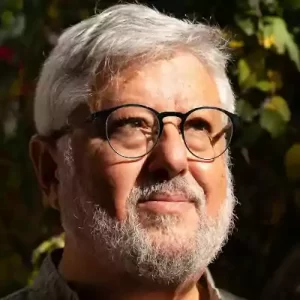Yahya Sinwar drove a strategy to exploit Israel’s willingness to trade Palestinian prisoners for hostages; Gaza leader spent two decades in prison in Israel
When Hamas leader Yahya Sinwar was imprisoned in Israel more than a decade ago, he explained to an Israeli official a theory now central to the war in Gaza.
Sinwar said that what Israel considers its strength—that most Israelis serve in the army and soldiers hold a special status in society—is a weakness that can be exploited, said Yuval Bitton, who spent time with Sinwar as the former head of the Israel Prison Service’s intelligence division.
The idea proved accurate in 2011 when Sinwar was one of 1,027 Palestinian prisoners freed for a single Israeli soldier.
Now, Sinwar is holding hostage 138 Israelis, including soldiers, and the Hamas leader is betting he can force the release of thousands of Palestinian prisoners and establish a permanent cease-fire. He’s relying on his judgment of Israeli society after two decades studying it in jail, learning Hebrew, watching the local news and getting inside the Israeli psyche.
But first, Hamas has to survive Israel’s powerful and deadly counterattack. If Hamas has miscalculated, Sinwar could be overseeing the destruction in Gaza of the U.S.-designated terrorist group—and lose his own life.
The gamble has already come with huge costs, including devastation across huge swaths of Gaza and the deaths of around 17,700 Palestinians.
Israel says its plan is to destroy Hamas’s leadership in the strip, including Sinwar, and prevent the group from ever again threatening Israeli communities after the Oct. 7 attacks killed 1,200 Israelis, most of them civilians. Still, after negotiating the release of women and children during a temporary cease-fire that collapsed this month, the Israeli government faces growing pressure to work with Sinwar for the freedom of the remaining hostages.
“He understands that Israel will pay a heavy price,” said Bitton. “He understands this is our weak spot.”
Sinwar’s playbook since becoming leader of Hamas in Gaza in 2017 has been to constantly remind Israelis they are in conflict with Palestinians, one moment engaging constructively with Israel, and the next, pursuing violent means for political ends. He has a history of hunting down Palestinian collaborators with Israel, and his approach to the hostage negotiations was viewed by some Israelis as an attempt at psychological warfare.
During the recent hostage negotiations, he cut off communications for days to put pressure on Israel to agree to a pause that would give Hamas time to regroup, according to Egyptian mediators. When the hostages were released, they were freed in batches each day, rather than in one go, creating a daily sense of anxiety in Israeli society.
Sinwar, who is in his early 60s, has since told Egyptian negotiators that the war won’t be over quickly, the way other rounds of violence in Gaza were, and could last for weeks, indicating he wants to squeeze as much as he can from Israel for the remaining captives.
At the moment, Sinwar is the main decision maker in Hamas as the most senior political leader in Gaza, who is working closely with Hamas’s military wing. The head of Hamas’s political bureau, Ismail Haniyeh, is currently based in Doha, and his deputy, Saleh Arouri is in Beirut. While Hamas’s leadership in normal times makes decisions based on consensus, Israel believes Sinwar and Hamas militants around him in Gaza are more narrowly directing the war.
Spokespeople for Hamas didn’t respond to requests for comment on Sinwar and the group’s strategy.
Following the breakdown of the recent cease-fire, Hamas said that the militant group has only hostages who are soldiers and “civilians serving in the army,” and that it won’t release more of them until Israel ends its war. The group has said it is willing to free all the hostages in Gaza for all the Palestinian prisoners in Israeli jails, estimated at more than 7,000 people. Israel says Hamas still holds both civilians and soldiers.
Israel’s strategy for getting the remaining hostages out focuses on making battlefield gains to force Hamas to release the captives. Israeli officials’ theory is Hamas was more willing to negotiate on the release of women and children because Israel had invaded Gaza and began to pressure the group militarily.
Israeli forces are currently fighting Hamas in Khan Younis, where Sinwar grew up, and this week surrounded his house, a largely symbolic move as he is believed to be hiding elsewhere underground.
Israel has vowed to kill Sinwar and all of Hamas’s top leadership, but senior officials have sent mixed messages over whether the government would be open to allowing lower-level Hamas fighters out of the strip.
One of the reasons Hamas mounted the Oct. 7 attacks was to kidnap soldiers to trade for Palestinian prisoners, according to Palestinian political analysts.
When Sinwar was freed in the 2011 swap, he thought Hamas should have pushed harder for Israel to release Palestinians responsible for bombings that killed Israelis and who were serving multiple life sentences, said people involved.
As he was freed, Sinwar told those who hadn’t made the cut he would work to get them free, these people said.
“It’s a personal thing,” said Mkhaimer Abusada, a Palestinian who before the war taught political science at Al Azhar University in Gaza. “He doesn’t feel comfortable leaving jail in 2011 and leaving some of his comrades inside.”
Should negotiations restart, Gershon Baskin, an Israeli peace activist who helped broker the 2011 agreement, said Israel would be unlikely to yield to Sinwar’s demand and give up Palestinians considered the most dangerous. Sinwar, waging war against Israel more than a decade after release, epitomizes why freeing prisoners who are serving life sentences is a risk for Israelis, he said.“He is the primary reason why they wouldn’t agree to it,” said Baskin. “They made that mistake once.”
Hunting informants
Sinwar has spent more years as a member of Hamas inside prison than outside of it.
Before serving time, Sinwar was close to the founder of Hamas, Sheikh Ahmed Yassin, who himself had been released in 1985 in a swap involving more than 1,000 prisoners for three Israeli soldiers.
Sinwar worked with his mentor to hunt Palestinian informants suspected of working with Israel, according to Israeli officials. The internal security police set up by Sinwar was a forerunner of Hamas’s military wing, Izz ad-Din al-Qassam Brigades, these Israeli officials said.
In 1988, Israel detained him. During a series of interrogations, Sinwar explained how he rounded up a suspected Palestinian collaborator with Israel while the man was in bed with his wife, according to a transcript of his confession reviewed by The Wall Street Journal.
He blindfolded the Palestinian, called Ramsi, and drove him to an area with a freshly dug grave where Sinwar strangled him with a scarf known as a keffiyeh, a symbol of the Palestinian cause.
“After strangling him, I wrapped him in a white shroud and closed the grave,” Sinwar said in his confession. “I was sure that Ramsi knew he deserved to die for what he did.”
Sinwar described three similar killings of Palestinians he accused of collaboration, according to the transcript of the confession.
In another incident, Sinwar said he believed the brother of a Hamas operative was collaborating with Israelis, according to Michael Koubi, who was one of those who first interrogated Sinwar over more than 100 hours for Israel’s internal security service. Sinwar said he asked the Hamas operative to invite his brother to a meeting, and they put him in a grave and buried him alive, Koubi said.
Koubi said that in a separate interrogation, the Hamas leader confessed to killing 12 Palestinians before being arrested. None of the men Sinwar killed were working with Israeli security authorities, Koubi said.
As early as 1989, Sinwar told his interrogator he was planning to establish units that would conduct raids into Israel to kill and capture people, Koubi said.
Sinwar was also involved in the abduction and murder of two Israeli soldiers, according to the Israeli military. He was given multiple life sentences and spent 22 years in jail.
Hamas was in its infancy when Sinwar was jailed. It had evolved in Gaza from the Egyptian Islamist and social movement, the Muslim Brotherhood. In the year he was arrested, Hamas issued a charter of principles that included a goal of destroying Israel.
He was an influential member even inside prison. Prisoners are one of four power bases in Hamas, alongside members in the West Bank, in Gaza and in the diaspora outside the Palestinian territories, according to Israeli officials and independent researchers. Israel generally keeps Palestinians from the same factions housed in different areas of prisons, according to former Israeli prison officials. Hamas members establish hierarchies inside prisons similar to their outside structures, and choose a leader in each prison, and a top person across all Israeli prisons, the former Israeli prison officials said.
Members twice chose to make Sinwar their chief across the entire prison system, Bitton said. During the times he wasn’t chief, Sinwar held great sway over the people who were leaders, Bitton and Koubi said.
In 2000, Palestinians rose up against Israel in the West Bank and Gaza following collapsed peace talks over the creation of a Palestinian state. Hamas became involved in the uprising, known as the second intifada, waging attacks and some of the highest-profile suicide bombings. Sinwar’s role in the violence of the second intifada, if any, isn’t clear.
In 2004, he appeared to develop neurological problems, speaking unclearly and struggling with walking, Bitton said. Doctors examined him, finding an abscess in the brain that threatened his life. They rushed him from a prison near Beer Sheva to the city’s hospital for surgery.
After a successful operation, Sinwar returned to prison and thanked the doctors for saving his life, former prison officials said.
Sinwar gave Israeli officials the impression he wanted a halt to violence—at least in the short term. At the end of the Palestinian uprising in 2005, Sinwar was interviewed by an Israeli journalist inside prison. The leader told the journalist that Hamas would be open to a long-term cease-fire with Israelis that he said could stabilize the region, but would never accept Israel as a state. He said at that time that he understood Hamas could never defeat Israel militarily.
Hamas, he said, is stubborn. “Just as we made the lives of the Jews bitter during the confrontation,” he said in Hebrew, referring to the intifada, during the interview. “We will make their lives difficult in dialogue about the cease-fire.”
Plan to kidnap soldiers
Hamas operatives in 2006 surprised Israeli soldiers at a command post on the border of the Gaza Strip, kidnapping 19-year-old Gilad Shalit. One of the people responsible for orchestrating the kidnapping, according to Israeli officials, was Sinwar’s younger brother, Mohammed.
Talks about freeing Shalit dragged on for years.
In prison, Sinwar and his fellow prisoners spent most of their lives in cells of three to eight people, getting out for two sessions a day in the yard to walk around for about an hour and half. They taught each other English and Hebrew and read history and the Quran, Bitton said.
During negotiations between Israel and Hamas over the release of Shalit, Sinwar was influential in pushing for the freedom of Palestinians who were jailed for murdering Israelis.
He wanted to release those who were involved in bombings during the second intifada that had killed large numbers of Israelis, such as at a hotel on a Jewish holiday that initially killed 19 and became known as the “Passover Massacre,” according to Bitton, Baskin and an Egyptian official, who helped broker the deal.
Sinwar was so maximalist in his demands, Israel put him in solitary confinement to curtail his influence within Hamas, Bitton and the Egyptian official said.
Israel eventually released some Palestinians who had committed murders and were considered dangerous, including Sinwar himself, who only just made the cut to get out, because Israelis had reservations about releasing him, Baskin said.
“Releasing him was the worst mistake in Israel’s history,” said Koubi, his interrogator while in jail.
A week after release in 2011, Sinwar told the Safa Press, a Palestinian news agency, that the best option for freeing prisoners left inside was to kidnap more Israeli soldiers.
He arrived back in Gaza to a very different strip. Hamas now ruled it after wresting control from the internationally recognized Palestinian Authority. The enclave was fenced off from the rest of Israel.
Sinwar again exerted influence within Hamas. During the war in 2014, he was involved in rounding up and killing suspected Palestinian informants for Israel, according to Israeli and Egyptian officials. Hamas called the killings “Operation Strangling Necks,” according to Amnesty International, which later documented the deaths.
One of those found dead and bullet-ridden during the conflict was the former spokesman for Hamas, Ayman Taha, according to Amnesty International. Taha had been a liaison between Hamas and Egyptian intelligence, according to Egyptian officials, who believe Sinwar ordered his death over concerns he was leaking information about Hamas’s relationship with Iran.
Hamas at the time said Taha appeared to have been killed in Israeli airstrikes.
In 2016, Sinwar was involved in a decision to execute a senior commander of the armed wing, Mahmoud Ishtaiwi, according to Israeli and Egyptian officials and a person close to the murdered commander.
The exact reasons why aren’t clear. Egyptian officials say Sinwar arrested Ishtaiwi and convinced Hamas he was a spy for Israel. A Hamas official said the commander was an informant for Arab countries.
Before his death, Ishtaiwi told his family that Mohammed Deif, the head of the armed wing, had visited him and ordered other Hamas officials to release him, the person close to Ishtaiwi said. He was killed anyway.
Hamas at the time in a statement said the commander was executed for “behavior and moral” crimes.
A year later, Sinwar was voted as leader of Hamas in Gaza by its members. Other Hamas leaders assured members that his election as Gaza chief wouldn’t drag the group into new rounds of internal and external violence, according to Hamas officials.
Sinwar again said publicly Hamas was committed to the release of every Palestinian prisoner in Israeli jails. He soon sought to reconcile Hamas with the Palestinian faction that governs the West Bank, warning he would “break the neck” of anyone who stood in the way. Those talks failed to progress and Palestinian attempts to create their own state were complicated by internal divisions.
In 2021, Sinwar won a second term as Hamas leader in Gaza, again vowing to liberate Palestinian prisoners. In May that year, Hamas fired rockets on Jerusalem helping spark an 11-day conflict.
The death and destruction wrought in the conflict created a sense among the Israeli security establishment that Hamas was deterred and that Sinwar wouldn’t attempt to attack because he was more focused on building the strip economically.
Oct. 7 showed that was incorrect. While the initial lightning attack proved a success for Hamas, Sinwar made two mistakes, according to Amos Gilead, a former Israeli senior defense official. He thought that the attack would start a regional war involving Iran and Hezbollah, and that Israel wouldn’t invade Gaza to kill the Hamas leadership, Gilead said.
“Now his strategy is to gain time,” Gilead added. “But we don’t have any choice other than to destroy him.”
Originally Published by The Wall Street Journal December 11, 2023, print edition as ‘Hamas Leader Studied His Enemy’. Republished at https://www.wsj.com/world/middle-east/hamas-yahya-sinwar-israel-palestinian-hostages-6407dc41
Authored by Rory Jones at Rory.Jones@wsj.com, Summer Said at summer.said@wsj.com and Dov Lieber at dov.lieber@wsj.com



